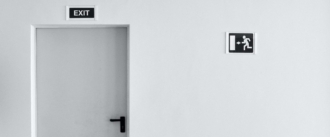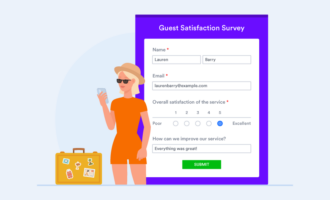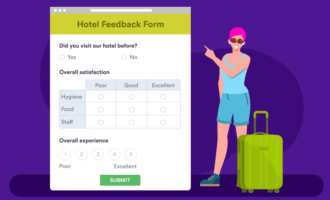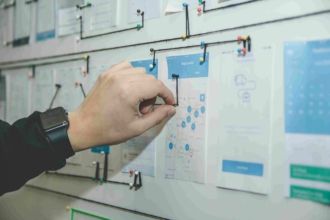Many organizations use surveys to get insight into their customers’ level of satisfaction with products and services. However, sometimes customers just don’t have the time to offer feedback, or they may not be fluent in the language of the survey. This is where a smiley face rating scale comes in.
In this article, we cover all the details of the smiley face rating scale — what it is, when to use one, and how to phrase this type of survey question.
The smiley face rating scale and when you should use it
Judging by the name, you can already guess that the smiley face rating scale includes smiley faces. Typically, a business will use this type of survey to judge customer satisfaction levels for specific areas of the business, such as customer service, product functionality, price, and more.
The rating scale includes multiple face emojis, in order from sad or angry to smiling and happy. A smiley face rating scale typically has between three to five faces. The faces help customers convey how they feel about a product or service by choosing the face that best resembles their feelings about the question topic.

Smiley face rating scales don’t work for every customer survey because they limit the type of answers a customer can give. They’re specifically suited to these situations:
- Surveying customers at busy in-person locations: Crowded malls or stores are good places to conduct surveys with just one smiley face rating scale question because they’re quick, easy to understand, and easy to conduct. For example, a retail store may use a smiley face rating scale survey for all customers as they leave the store to determine whether they were satisfied with their visit.
- Evaluating email communication: You can also pose smiley face rating scale questions in your communications, and a great place to include one is near your email signature. This is ideal for those in customer-facing positions and those who want to get insight into whether their email provided the answers the customer was looking for.
- Surveying audiences with different language preferences: A smiley face is a universal language nowadays, so it’s useful in any instance where the language of business differs from the language of customers. This way, organizations can get insights from people who speak other languages.
- Surveying kids: Depending on their age and reading level, children may have a hard time responding to traditional surveys. However, a smiley face rating scale brings an element of fun to the survey and makes it easy for them to answer questions.
- Evaluating customer transactions: Right after a purchase, event, or meeting is a great time to implement a smiley face rating scale survey, either in person or online. The transaction is fresh in customers’ minds, so they’re more likely to answer honestly.
- Evaluating product functionality: Specifically with software and applications, using smiley face rating scales within the user experience itself can provide organizations with insights into how customers like specific features and functions.
Smiley face rating question examples
A smiley face rating scale is intended to communicate a judgment or opinion, which means it doesn’t work with all types of survey questions. It only works with questions that relate to satisfaction about a specific aspect of the business, such as a customer service interaction or a product feature. Here are some examples of smiley face rating scale questions:
- How satisfied are you with our customer service?
- Overall, how satisfied are you with your experience at our store?
- How pleased are you with this new product feature?
- How satisfied are you with the event today?
- How satisfied are you with our answer to your question?
When writing your smiley face rating questions, be sure to test them out to make sure the smiley face answer options make sense with your questions. If the question isn’t directly about someone’s satisfaction with a specific aspect of your business, it’s possible the smiley face rating scale won’t make sense to the customer.
Jotform: An easy way to create smiley face rating scales
Ready to create your own smiley face rating scale? Jotform makes it easy. Just use the Emoji Slider in Jotform Cards to create your customized smiley face rating scale. You can customize each scale with three, five, or seven emojis. With Jotform, you’ll be gathering customer satisfaction insights in no time.






































































































Send Comment: